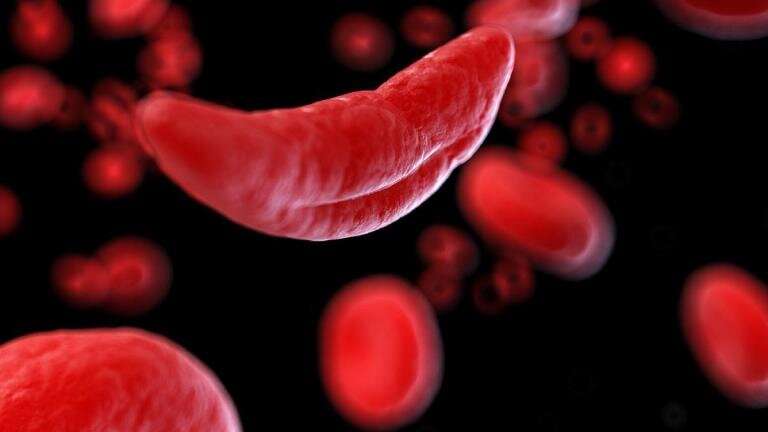Using base editing to treat sickle cell disease in mice

A team of researchers from the Broad Institute, Harvard University and St. Jude Children’s Research Hospital has used a base editing technique in a novel way to treat sickle cell disease (SCD) in mice. In their paper published in the journal Nature, the group describes their new technique and how well it worked when tested with mouse models.
SCD is an inherited blood disorder in which red blood cells are misshapen, preventing them from carrying as much oxygen to cells throughout the body as is needed. Patients with the disease experience fatigue, organ damage, intense pain, and very often, an early death. Prior research has shown that the disease is caused by mutations in the HBB genes. Recent efforts to cure the disease have been focused on editing the faulty gene, but such approaches have typically involved slicing the DNA helix which has been found to sometimes introduce editing mistakes.
In this new effort, the researchers took another approach—using base editing instead. But they had to try a new base editing approach because base editors have are incapable of editing mutated genes particular to SCD in a way that allows them to return to a “wild” type variant—the kind found in healthy cells. The new technique involved editing the mutated genes into another variant called Makassar β-globin. People who have such variants, which are rare, have been found to exhibit no symptoms of SCD or to have any other ailment.
The work by the team involved modifying hematopoietic stem cells that mature into plasma and blood cells using the base editing enzyme TadA-8e—doing so converted the valine base into alanine instead of the glutamic acid found in healthy cells. They also used a Cas9 protein they developed to recognize the target sequence to prevent impacting off-target cells.
Source: Read Full Article


